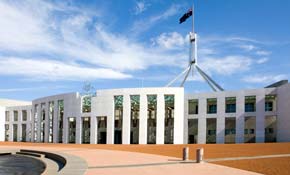
The government revealed its list of approved printers yesterday, which included smaller businesses such as AddColour Digital alongside giants such as Geon, Blue Star and PMP.
All 78 companies on the Printing and Production Services list will have the opportunity to bid for work from 12 federal agencies, including Centrelink and Medicare.
Most printers contacted by ProPrint said the system was structured so that print management company Stream would send invitations to tender as work came up.
Mark Frankcom from Adelaide Copy Office echoed the overriding sentiment that price would be the main factor in awarding work.
“Once you’re on the panel, it’s price-driven and that’s it,” he said.
Jeff Unger, owner of Canberra-based 10-staff printer AddColour Digital, said: “90% of the time, the cheapest price gets it.”
Kieran May, director of Canberra-based, 15-staff New Millennium Print believed there was potential for the best value, not just the lowest price, to win out.
“[The government seems] satisfied that those companies on the list are going to do the job well, so it’s probably going to come down to the best price on the day,” he said. “But I do think there will be an element of value for money.”
One printer, who asked not to be named, said the new system was a welcome break from exclusive contract systems that tended to favour larger multi-nationals.
“It’s certainly a lot better than some of the other systems they’ve had. At least this gives us access to the work if we can be competitive. Some of the old systems were terribly damaging, and I don’t think end-users got much value for money,” he said.
Frankcom, owner of Adelaide Copy Office, which has 10 employees, said experience with government contracts helped get the company on the approved supplier list.
“We’ve got a few state government contracts already, so that helps,” he said.
“When you submit for this work, they’re not coming out to check out your presses. If your tender is good enough, that’s it.”
David McInnes, director of 22-staff, Canberra-based Instant Colour Press, said having plenty of equipment on the floor and so ensuring quick turnaround times had made the difference in attracting government work.
“We’re pretty renowned in Canberra for being able to turn around jobs quickly. People always want to be served quickly, particularly in printing,” said McInnes.
“Finding the right pricing level” would be key to winning the work now on offer, according to McInnes.
“You need to play it by ear. If you don’t win work, you need to start adjusting your price to the point where you start winning work,” he said.
“Sometimes you might do a job for $600 and win the work, so next time you do it for $650 and still win, so you then offer to do the job for $700 and lose it. So it’s about finding the right level,” added McInnes.
AddColour’s Unger reported having done “absolutely stacks” of government work prior to being on the approved supplier list, though said that the company had mostly been used for “little jobs”.
“Even if you’re on the list, it doesn’t mean that you’re going to get a job,” he said.
In December, Printing Industries praised the government’s new tendering system for its potential “give SMEs access to government work”.
Do you think the federal government’s list is a fair representation of the industry? Do you think price will be the main factor in awarding work? Leave your comment below.
Comment below to have your say on this story.
If you have a news story or tip-off, get in touch at editorial@sprinter.com.au.
Sign up to the Sprinter newsletter
